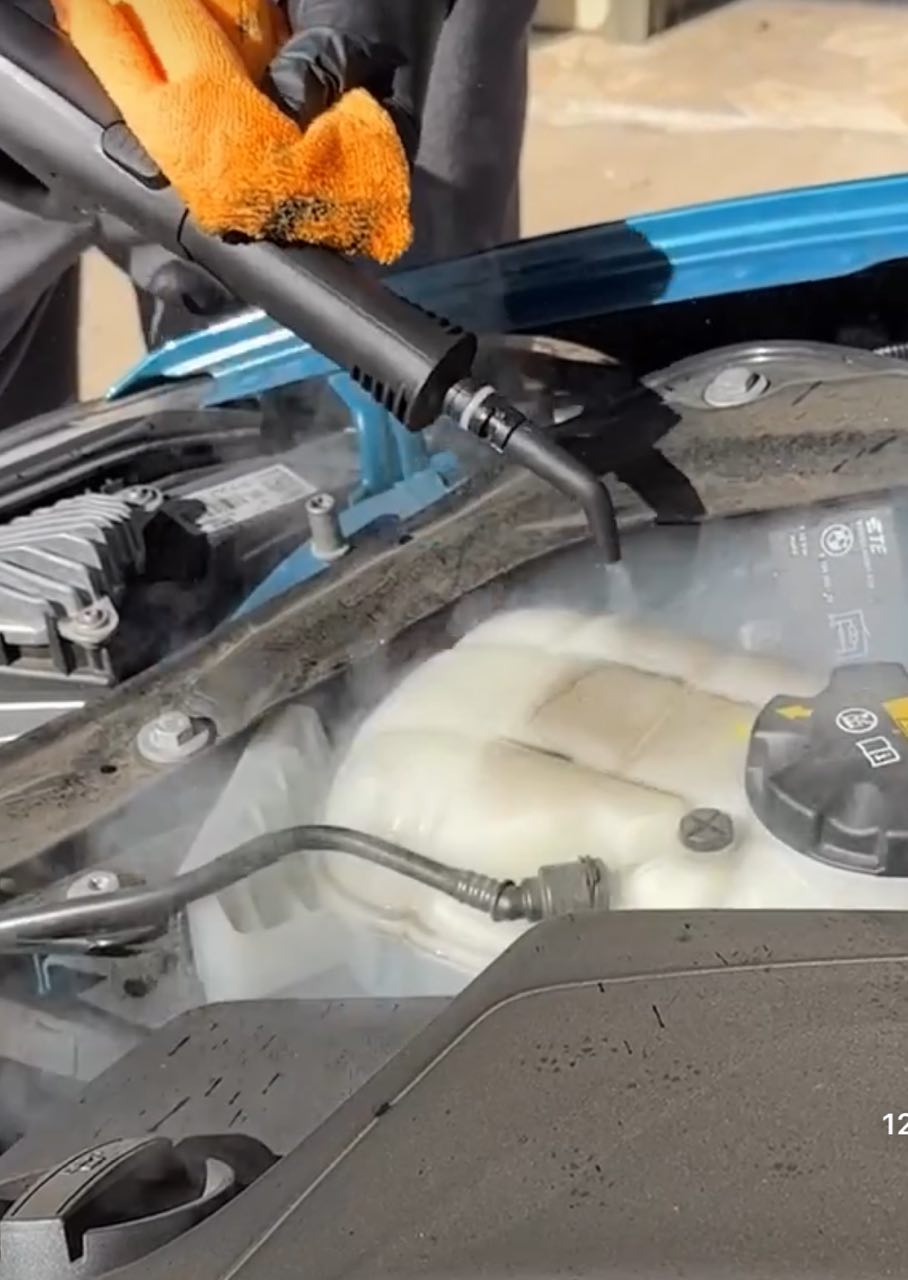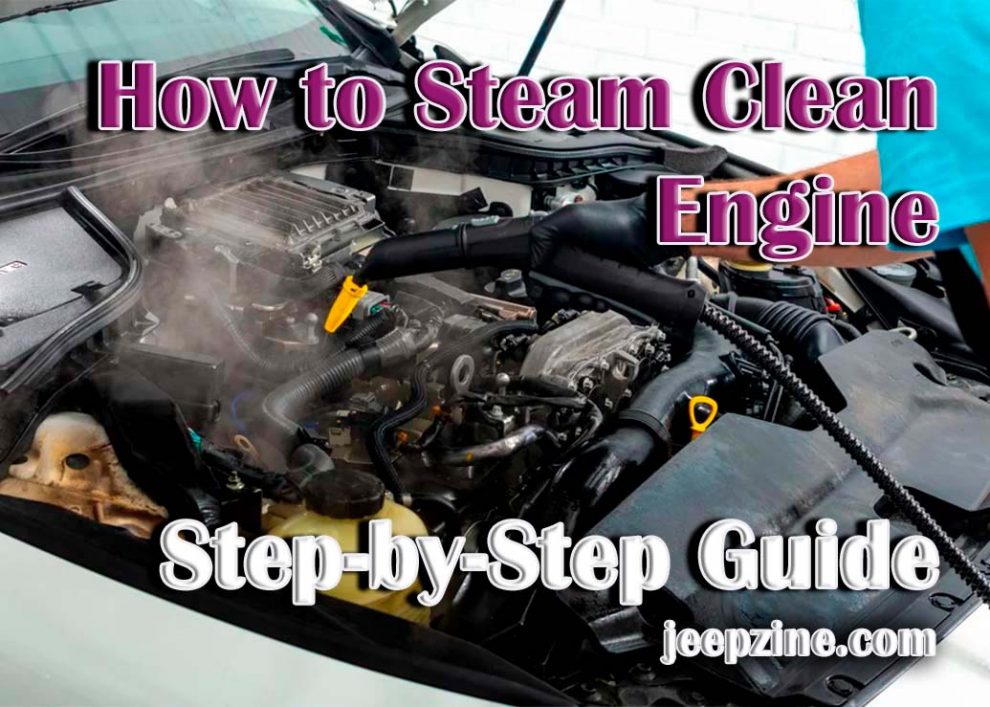Do you own a car or truck? Are you looking for a way to keep your engine looking nice while preserving its performance and reliability? If so, then steam cleaning your engine is the perfect solution! Steam cleaning an engine does more than make it look nice; it also helps to remove dirt, dust, debris, and even some types of oil and grease that can build up over time. This process can help improve your vehicle’s performance while keeping it in great condition. In this article, we will offer a detailed guide on how to steam clean an engine safely and efficiently. We’ll discuss what materials are needed and the proper technique for steam cleaning your engine. With this information in mind, you’ll have everything you need to ensure your vehicle’s engine stays clean and performs at its best. So, let’s dive in and learn how to steam clean an engine!
What Is Steam Cleaning?

Benefits of Steam Cleaning Your Engine
Steam cleaning your engine has many benefits, including improved engine performance and reliability. Regular steam cleaning helps remove built-up dirt, dust, and debris which can hinder the performance of your vehicle’s engine performance. It also removes oil and grease that can accumulate over time and reduce the engine’s efficiency. The lubrication provided by steam helps to reduce wear on moving parts throughout the engine, extending its life. Additionally, steam cleaning is a safe method for cleaning an engine as it does not require harsh chemicals or abrasives that could damage the components inside.
What You Need Before You Start
You must gather the necessary materials before you begin steam cleaning your engine. First, you’ll need a quality steam cleaner with a long hose and adjustable pressure settings. This will allow you to reach all parts of the engine and adjust the pressure according to what is needed for each area. Second, you’ll need a few soft brushes to help loosen any stuck-on debris before using the steam cleaner. The brushes should be made of a soft material like microfiber or sponge, so they won’t damage any components in the engine while scrubbing. Finally, you’ll want to have some degreaser on hand to remove oil and grease buildup before steaming. After cleaning, if you face difficulties in starting your engine due to excess moisture, understanding the techniques for Starting a Flooded Engine can be beneficial. Also read about the steps and precautions needed to safely and efficiently get your engine running again.
Step-by-step Guide to Steam Cleaning Your Engine
Now that we know what materials are needed let’s look at how to steam clean your engine safely and effectively. The first step is to ensure your vehicle is parked in a dry place with ample ventilation so that vapor from steaming can escape safely without damaging nearby items or entering your car’s interior space. Once that’s done, here are the steps:
-
Disconnect cables and hoses from the battery so there is no risk of electrical shock when using the steamer.
-
Carefully inspect each component on your engine for any visible dirt or debris buildup and remove it with a soft brush as needed for better results when steaming.
-
Spray all areas of your engine liberally with degreaser spray and let sit for 5 minutes before rinsing off with water or wiping down with microfiber cloths, depending on how much buildup there is.
-
Attach the steam cleaner hose to an appropriate nozzle setting depending on which area of your engine needs cleaning (e.g., higher pressure near valve covers). Begin by starting at one corner of the engine bay and working in small sections around different components, as this will help ensure even coverage throughout while avoiding any potential damage from too much heat or pressure concentration in one spot too long. Ensure not to hold it in one area longer than 10 seconds, as this could cause damage due to overheating certain parts.
-
Turn off the steamer and disconnect it from the battery. Wipe away any leftover moisture using a microfiber cloth or towel.
-
Before starting your engine, reattach all cables and hoses to the battery.
Tips for Maintaining a Clean Engine
Once you’ve steam-cleaned your engine, you can take a few simple steps to ensure it stays clean and in good condition. First, ensure you regularly check the engine’s parts for any accumulation of dirt or debris. If any is found, remove it with a soft brush before using the steamer. Additionally, keep an eye out for any oil or grease leaking from parts of the engine, as this can cause buildup over time. Ensure you address these problems promptly to prevent further damage in the future. Finally, try to limit exposure of your vehicle’s engine bay to water and other contaminants as much as possible by covering it with a tarp or plastic sheet when necessary.
Conclusion
Steam cleaning your engine is a great way to keep it clean and performing at its best. Ensure you address these problems promptly to prevent further damage in the future. Be sure to check for any dirt or debris buildup before steaming, use the proper pressure settings on the steamer, and follow these steps carefully for best results. Finally, take some necessary steps to maintain a clean engine by monitoring components for buildup, checking for oil or grease leaks, and protecting it from moisture when possible. With this information in mind, you’ll be able to give your vehicle’s engine an effective deep clean that will keep it running smoothly and looking great!

